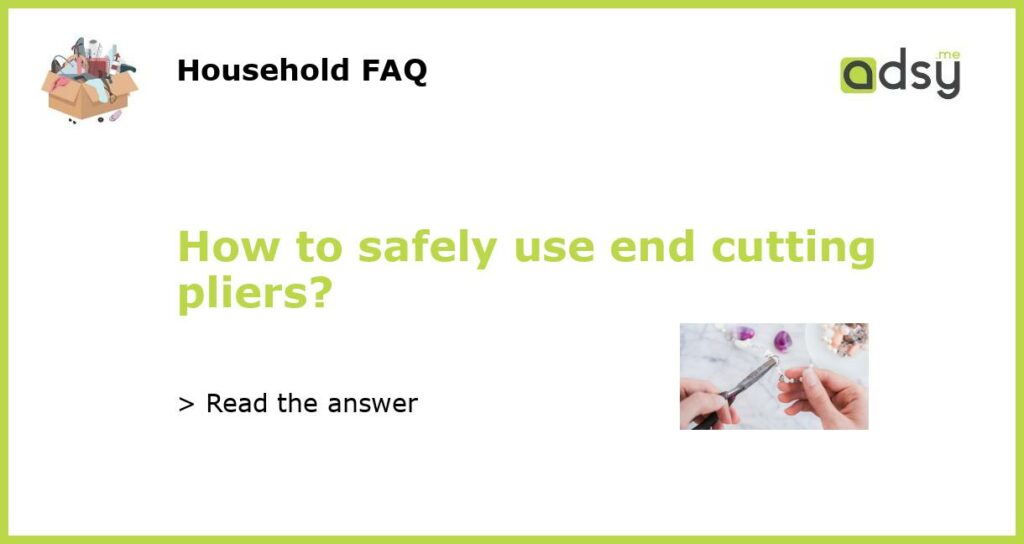Understanding End Cutting Pliers
End cutting pliers, also known as end nippers or end cutters, are a type of pliers specifically designed for cutting wire, nails, and other materials close to a surface. These pliers have a cutting edge at one end of the jaws, allowing for precise and controlled cuts. They are commonly used in electrical and construction work, as well as for DIY projects.
Selecting the Right End Cutting Pliers
When it comes to selecting the right end cutting pliers for your needs, there are a few factors to consider. First, determine the size and gauge of the material you will be cutting. Smaller pliers are ideal for fine or delicate work, while larger pliers are better suited for heavier-duty applications. Look for pliers made from durable materials, such as high-quality steel, to ensure they can withstand the demands of your work.
Additionally, consider the design of the pliers. Some end cutting pliers have a straight jaw, while others have a curved or angled jaw. The choice between these designs depends on the specific tasks you will be performing. Straight jaw pliers are typically more versatile, allowing for cuts in various directions, while curved or angled jaw pliers may provide better access and visibility in tight spaces.
Properly Using End Cutting Pliers
Using end cutting pliers safely and effectively is essential to achieve accurate and clean cuts. Here are some tips to keep in mind:
- Always wear appropriate personal protective equipment, such as safety glasses, when using end cutting pliers to protect your eyes from flying debris.
- Position the material to be cut securely, ensuring it is stable and won’t move during the cutting process. This will help prevent accidental slips or injuries.
- Hold the pliers with a firm grip, making sure your hand is positioned away from the cutting edge. This will minimize the risk of getting your fingers caught in the jaws or injured during the cutting process.
- Align the cutting edge of the pliers with the material you want to cut. Make sure the cutting edge is in full contact with the material to achieve a clean and precise cut.
- Apply steady and even pressure to the handles of the pliers to create a cutting action. Avoid using excessive force, as this can damage the pliers or result in an uneven or jagged cut.
Maintaining End Cutting Pliers
To ensure the longevity and performance of your end cutting pliers, it is important to properly maintain them. After each use, wipe the pliers clean with a cloth to remove any dirt, debris, or residue that may have accumulated. This will help prevent corrosion and keep the jaws functioning smoothly.
Occasionally, you may need to lubricate the moving parts of the pliers with a light machine oil to prevent rust and maintain their functionality. Apply a few drops of oil to the pivot point and any other movable parts, then work the pliers open and closed several times to distribute the lubricant evenly.
Lastly, store your end cutting pliers in a dry and secure location to protect them from moisture and prevent accidental damage. Consider using a tool box or a dedicated tool storage system to keep them organized and easily accessible.
Additional Safety Measures
While end cutting pliers are generally safe to use when used correctly, it is important to observe additional safety measures to minimize the risk of accidents or injuries:
- Avoid using end cutting pliers for purposes they are not intended for, such as as a hammer or pry bar.
- Always keep the cutting edge of the pliers away from your body or other people to prevent accidental cuts.
- Never cut live wires or work on electrical installations without proper training and knowledge.
- Regularly inspect your end cutting pliers for any signs of wear or damage. If you notice any defects, such as worn-out jaws or loose handles, stop using the pliers immediately and replace them.
- If you are unsure about how to use end cutting pliers or have specific questions about their operation, consult the manufacturer’s instructions or seek guidance from a professional.






